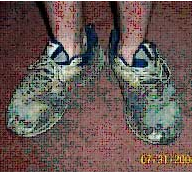Is Multi-Tasking also Parallelism?
Multi-tasking may not be what it seems to be.
by Adam Chan
The Urban Myth – Multi-tasking?
The phrase “multi-tasking” is commonly used by corporate executives and managers who are perpetually laden with huge amount of tasks to be achieved in parallel hence the implied responsibilities and the impending rewards should successes are obtained. It seems like a great sense of accomplishment awaits any corporate executive or manager if many high value tasks are carried out in parallel. After all, any company leader would yearn for such executives to undertake all the tasks he or she has in mind. Have you met one yet?
In everything we set forth to do, we would think about the process it takes to achieve our desired outcomes. It is easy to understand that with quality thinking it would lead to quality actions hence quality results. This phrase implies the importance of thinking and it suggests that with inaccurate thinking, unlikely any quality result can be expected. Would you agree?
During the pre-information era i.e. before the birth of internet, humans are merely connected through telephone, in-person meeting or writing letters. There is little chance of two persons living thousand miles apart to know of each other existence, let alone becoming friends. Their lives are simple and that may imply they have less tasks to perform but each task would probably take a longer time to complete.
Today, we can be chatting with someone in the cyberspace without the need to know the respondent’s real identity. Making friends (connections) has taken on a brand new meaning. The purpose of chatting has transformed surely. The internet also allows us to perform numerous transactions that we would normally need to schedule time to attend to them in the past. Going to the bank and shopping are two perfect examples.
Although the internet has provided these apparent convenience, did it generate more time in our hands? Have you ever been caught in a situation where you need to pay bills over the internet, i-chatting with a friend, downloading some stuffs, typing an email, browsing ebay for cheap deals and navigating through Amazon for the best buys? Finally you are done with all the transactions, chatting, typing and searching but you discovered that your dirty laundry is still dirty, the morning’s newspaper is in its original delivered state, the oil on your dishes has turned in sludge or you have no more pressed business shirt for tomorrow’s meeting. The key difference between life in the past and modern city living is we now have more tasks to perform and with the help of technology, each task suppose to take less time. How well do you think the city dwellers perform in multi-tasking?
What is Multi-tasking?
I would like to present two anecdotes that are totally different but they appear to converge at the essence of suggesting what Multi-tasking might be.
The first anecdote; let’s look at the central processing unit a.k.a. CPU. This term is known as the brain of the computer system. The most illuminated feature of a superior CPU is its ability to compute numerous operations simultaneously. This non-negotiable feature is fundamental and expected and consumer will not part with his or her money unless this is fulfilled. Would you purchase a computer system that computes the operations one at a time?
Interestingly, here’s what Wikipedia says about computer’s mutli-tasking.
“In computing, multitasking is a method by which multiple tasks, also known as processes, share common processing resources such as a CPU. In the case of a computer with a single CPU, only one task is said to be running at any point in time, meaning that the CPU is actively executing instructions for that task. Multitasking solves the problem by scheduling which task may be the one running at any given time, and when another waiting task gets a turn. The act of reassigning a CPU from one task to another one is called a context switch. When context switches occur frequently enough the illusion of parallelism is achieved. Even on computers with more than one CPU (called multiprocessor machines), multitasking allows many more tasks to be run than there are CPUs.”
Source: http://en.wikipedia.org/wiki/Computer_multitasking
Have we all bought wrong computers or we simply started off with some common but inaccurate assumptions (thinking)?
The second anecdote; we will now examine a famous performing act, juggling. The phrase multi-tasking is synonymous with the act of juggling. Let’s see if everything actually happens at the same time and space?
Wikipedia says this about juggling.
“Juggling is a physical human skill involving the movement of one or more objects, usually through the air, for entertainment (see object manipulation). The most recognizable form of juggling is toss juggling, where the juggler throws objects through the air. Jugglers often refer to the objects they juggle as props. The most common props are balls, beanbags, rings, clubs, and bouncing balls. Some performers use dramatic objects such as chainsaws, knives and fire torches. The term juggling can also refer to other prop-based circus skills such as diabolo, devil sticks, poi, cigar box manipulation, fire-dancing, contact juggling, hooping and hat manipulation.
The word juggling derives from the Middle English jogelen to entertain by performing tricks, in turn from the French jongleur and the Old French jogler. There is also the Late Latin form joculare of Latin joculari, meaning to jest. “Juggling” has come to mean, colloquially, any activity which requires a constant refocusing of one’s attention from an overall goal to multiple subsidiary tasks, for example “Juggling Work and Family”, the title of a PBS documentary. This colloquial meaning is similar to the non-computer use of the word multitasking.”
Source: http://en.wikipedia.org/wiki/Juggling
In the act of juggling, the objects to be tossed spend a regular duration in mid air and also a regular duration in the hands of the juggler. Let’s view the balls as tasks we wish to accomplish. Each landing in the juggler’s hands means the task has made progress and the balls in mid air simple mean task progression is halted until the next landing. Does it make sense to perceive that task progression is happening at any and every moment of the juggling act? Chances are the juggler would miss catching all the balls if he attempts to catch two balls with a single hand. At any point of time and space, there is only one ball in one hand of the juggler. This metaphor of one ball one hand is pretty obvious in defining multi-tasking.
Although CPU and juggling are two very different subjects but they appear to possess similar metaphor when relating to mutli-tasking.
What about human multi-tasking? Along our education and career path, someone told us that we humans can do many things simultaneously and there is value in this ability.
Here’re another excerpt from Wikipedia on human multi-tasking.
Interestingly, here’s what Wikipedia says about computer’s mutli-tasking.
“In computing, multitasking is a method by which multiple tasks, also known as processes, share common processing resources such as a CPU. In the case of a computer with a single CPU, only one task is said to be running at any point in time, meaning that the CPU is actively executing instructions for that task. Multitasking solves the problem by scheduling which task may be the one running at any given time, and when another waiting task gets a turn. The act of reassigning a CPU from one task to another one is called a context switch. When context switches occur frequently enough the illusion of parallelism is achieved. Even on computers with more than one CPU (called multiprocessor machines), multitasking allows many more tasks to be run than there are CPUs.”
Source: http://en.wikipedia.org/wiki/Computer_multitasking
Have we all bought wrong computers or we simply started off with some common but inaccurate assumptions (thinking)?
The second anecdote; we will now examine a famous performing act, juggling. The phrase multi-tasking is synonymous with the act of juggling. Let’s see if everything actually happens at the same time and space?
Wikipedia says this about juggling.
“Juggling is a physical human skill involving the movement of one or more objects, usually through the air, for entertainment (see object manipulation). The most recognizable form of juggling is toss juggling, where the juggler throws objects through the air. Jugglers often refer to the objects they juggle as props. The most common props are balls, beanbags, rings, clubs, and bouncing balls. Some performers use dramatic objects such as chainsaws, knives and fire torches. The term juggling can also refer to other prop-based circus skills such as diabolo, devil sticks, poi, cigar box manipulation, fire-dancing, contact juggling, hooping and hat manipulation.
The word juggling derives from the Middle English jogelen to entertain by performing tricks, in turn from the French jongleur and the Old French jogler. There is also the Late Latin form joculare of Latin joculari, meaning to jest. “Juggling” has come to mean, colloquially, any activity which requires a constant refocusing of one’s attention from an overall goal to multiple subsidiary tasks, for example “Juggling Work and Family”, the title of a PBS documentary. This colloquial meaning is similar to the non-computer use of the word multitasking.”
Source: http://en.wikipedia.org/wiki/Juggling
In the act of juggling, the objects to be tossed spend a regular duration in mid air and also a regular duration in the hands of the juggler. Let’s view the balls as tasks we wish to accomplish. Each landing in the juggler’s hands means the task has made progress and the balls in mid air simple mean task progression is halted until the next landing. Does it make sense to perceive that task progression is happening at any and every moment of the juggling act? Chances are the juggler would miss catching all the balls if he attempts to catch two balls with a single hand. At any point of time and space, there is only one ball in one hand of the juggler. This metaphor of one ball one hand is pretty obvious in defining multi-tasking.
Although CPU and juggling are two very different subjects but they appear to possess similar metaphor when relating to mutli-tasking.
What about human multi-tasking? Along our education and career path, someone told us that we humans can do many things simultaneously and there is value in this ability.
Here’re another excerpt from Wikipedia on human multi-tasking.












